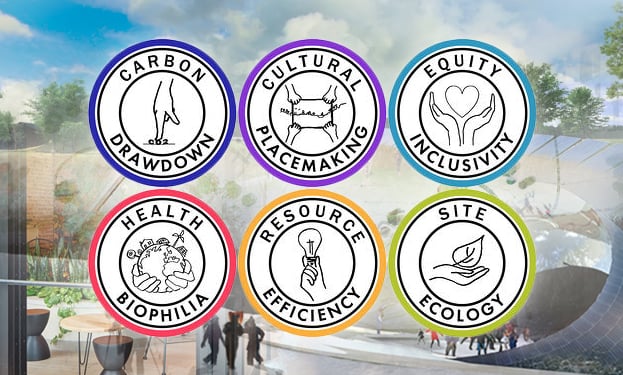Architects have been trying to save the world for centuries.
500 years ago, Filippo Brunelleschi’s dome helped to push Europe out of the Dark Ages and toward scientific, human-centric design renaissance. 100 years ago, Walter Gropius reframed architectural education practices to serve everyone, not just the upper crust, influencing nearly every major design movement that followed. Today, humbled architects are looking locally, striving to improve our communities through education, health, climate resilience, and community pride, all while treading lightly on the Earth.
Architects are wired to care about people, the planet, and especially about the long-term consequences of short-term thinking.
This is why it matters to me whether the firm I work for is a certified B Corporation like Pirie Associates. Instead of being an ambiguous industry buzzword like “green building,” it is real, rigorous, and important to me as a designer of the built environment.
I wanted to take the time to write about the significance of our newly awarded B Corp certification from my own perspective.
So, what is B Corp?
If you missed Laura Pirie’s blog post from June 5th, B Corporations are companies certified for their social impact by B Lab, a global non-profit organization. They meet high standards of verified social and environmental performance, public transparency, and legal accountability. B Corp is awarded to companies who take B Lab’s proprietary impact assessment- a monster of a questionnaire looking at everything from energy usage and employee policies to supply chain ethics and community involvement- and pass. Laura and Paul were our application shepherds who worked very hard to achieve this recognition. As of 2025, only about 150 pioneering architecture and design firms are certified worldwide.
What’s in it for architects like me?
Well, "Green" shouldn’t be optional. It should be embedded. For anyone else who spent hours in grad school debating the carbon footprint of concrete, this one’s probably close to your heart as well. Sustainability isn’t just about specifying FSC-certified wood or tossing on a green roof for good PR. It’s systemic. B Corps are evaluated on how they reduce environmental impact across their entire operation- from how their office runs, to how they source materials, to how they influence clients. B Corp architecture firms like ours are going to prioritize life-cycle analysis, pursue projects with strong impact goals, and are more likely walk away from work that doesn't align with our values.
Turns out, doing the right thing makes the job feel right, too. Not every architect dreams of designing amazing luxury condos with infinity pools shaped like electric guitars. Many of us came to this field to make a difference by designing things like affordable housing or more resilient infrastructure. But it’s hard to do values-driven work if your firm is only focused on profit margins.
As a certified B Corp, Pirie Associates is legally required to consider the impact of our decisions on people, planet, and profit (the triple bottom line). We choose projects that align with our purpose instead of looking for the highest bidder. This translates into more meaningful work for me personally, more opportunities to design with equity in mind, and fewer moments of existential dread in the middle of the night.
Bonus: this purpose-driven approach also tends to attract mission-driven clients (like our nonprofit and municipality friends) who value thoughtful design approaches and social impact.
Architecture’s long-standing “grind culture” is no secret, but I appreciate how much our studio values being able to spend evenings at home with family. B Corp firms are audited not only on environmental impact, but also on employee well-being, diversity, inclusion, and governance.
For example, B Corp-certified companies must:
-
- Pay living wages
- Offer benefits like healthcare and paid family leave
- Commit to inclusive hiring practices and equitable promotion policies
- Maintain transparent governance structures

And yes, there’s a higher-than-average chance there are office plants. The breakroom probably has good coffee and a compost bin.
Legacy Isn’t Just for Buildings! We often think about legacy in physical terms: the buildings and materials that are left behind. But legacy is also about culture, ethics, and impact. Working with a B Corp architecture firm means I’m contributing to a broader movement redefining what it means to be a “successful” business.
Pirie Associates is fostering a studio environment where designers can thrive without burning out, where marginalized voices are heard, and where the work doesn’t just win awards, it makes life better for real people. Clients today are looking for partners whose values align with theirs, and B Corp certification is a fast, third party verified way for architects like me to demonstrate that our firm puts rhetoric into action. It is a tangible, measurable sign that my firm is trying to do things the right way.
And in a profession built on integrity, vision, and a slightly masochistic love of deadlines, I think that kind of alignment matters.






